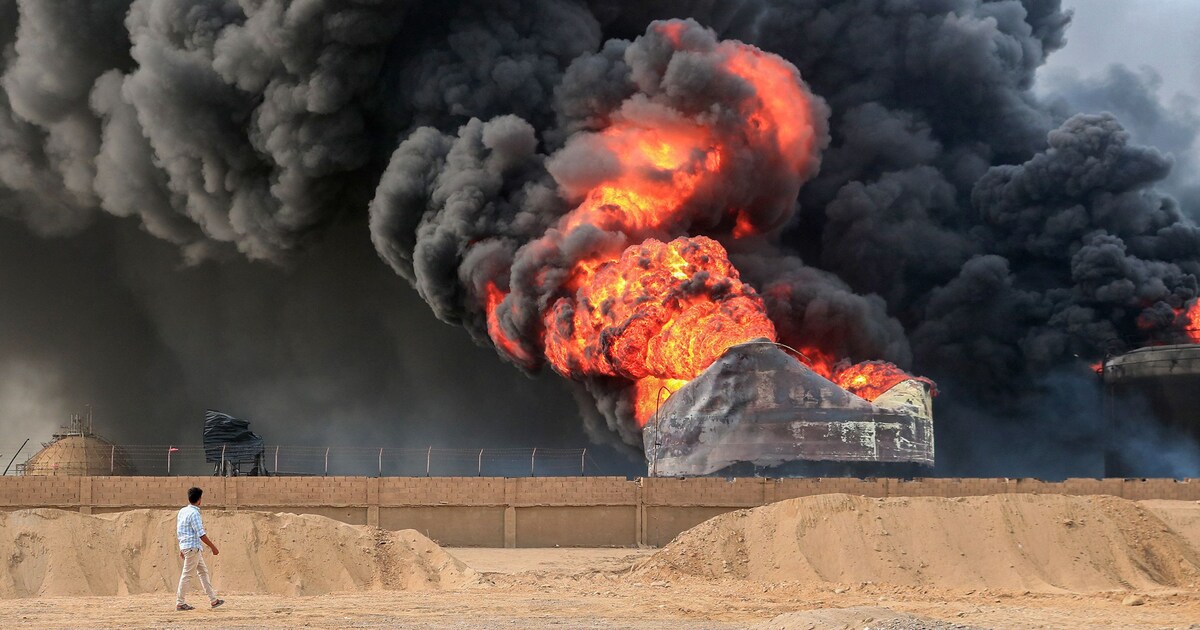
‘Operation Extended Arm’ is what the Israeli military aptly called the surprise attack on the Yemeni port city of Hodeidah on Saturday. After 320 attacks by Houthi fighters against Israel with cruise missiles, drones and ballistic missiles, Prime Minister Benjamin Netanyahu’s government had had enough.
In broad daylight, fighter jets, including the F-35 stealth fighter, took off from several air bases heading south. They were assisted by tanker aircraft to cover the 1,800-kilometer round trip to Yemen. Israeli beachgoers could easily see the aircraft flying overhead.
After a 2-hour, 50-minute flight, the F-35s and F-15s fired precision missiles at oil depots and port facilities that allow the Houthis to import Iranian weapons through Hodeidah. Videos released by the air force show the missiles hitting.
Loading Twitter message…
Message
“It seems that the Israeli military is sending a message with this attack, as the distance to the target also extends into parts of Iran,” commentator and former Israeli soldier Ron Ben-Yishai said on He Jerusalem Post“This demonstrates Israel’s ability to carry out surprise attacks at long distances.”
Not surprisingly, Israel also released videos of F-35s refueling in the air, to show what the air force is capable of. The country, in particular Prime Minister Benjamin Netanyahu, has been threatening a preemptive strike to destroy Iran’s nuclear program in recent years. The Houthi bombing surely did not go unnoticed in Tehran due to the great distance that had to be covered.
Operation Extended Arm is certainly not the only one that Israel has carried out far beyond its borders. Since the 1970s, the air force has also been present in Africa. In 1976, for example, a C-130 Hercules transport plane travelled some 4,000 kilometres to free more than a hundred Israelis in Uganda who were being held hostage by the Palestinians.
This commando operation is still considered one of the most successful in history. Hundreds of Israeli soldiers managed to land unnoticed at the airport in the Ugandan capital and free the hostages. Part of the Ugandan air force was also destroyed before the Hercules plane took off again. Netanyahu’s brother, the leader of the commandos, was killed in the operation.
About five years later, in 1981, the Israeli air force attacked Iraq. F-16s, protected by F-15s, flew in complete secrecy over Jordan and Saudi Arabia some 1,000 miles to destroy a nuclear reactor outside the Iraqi capital, Baghdad. Israel wanted to prevent Iraqi leader Saddam Hussein from using the Osirak reactor to develop nuclear weapons.
Loading Twitter message…
PLO Headquarters
In 1985, Israel copied this operation by destroying the headquarters of Yasser Arafat’s Palestine Liberation Organization (PLO) in Tunisia. During this air raid, which involved ten F-15s, the fighter pilots had to cover approximately 2,200 kilometers. The planes were refueled over the Mediterranean Sea by Boeing tankers.
Arafat was not killed, but the PLO compound was razed. In recent years, there have been several reports that the Israeli Air Force carried out F-35 strikes in Iraq and even Iran against Shiite militias, but Israel has never confirmed them.